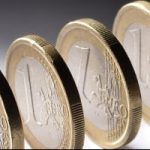COVID-conflicted, tech-inflated markets plus the US-Sino 5G conundrum seem to have Apple presently fighting a 2-front war.
In the former case, equity markets are finally taking a long hard look at the virus-impacted economy and wondering if perhaps all that misery could somehow impact investor thirst for shares, if maybe companies closing down may affect their value, and so forth. In the latter case, the battle for the 5G infrastructure could hamper the company’s release of its upcoming iPhone 12, kicking the company in the income bone to the tune of up to 7%.
Despite its 70% surge since year’s start, Goldman Sachs last week cited Apple’s “unsustainable” share price, saying it could drop well below $299. Indeed, Deutsche Bank in early July expressed concern for the share’s surprising rebound since mid- April.
Add to that, US state investigations into the company’s consumer protection performance, and we have one worm-infested fruit.
A Sickly Apple
Analysts began suspecting all was not well below the peel almost 3 months ago when Fortune ran a fundamental guide on the share. It ascribed Apple’s stellar performance to its sub-par valuation, which offered a 20% returnThe benefit one receives on an investment., frequent buybacks and a very loose Profit/Earnings ratio.
In fact, over a 5-year period, profits actually only rose by about 2.5% each year, no more than a pointThe unit of price change for bonds (1%), futures (0.01%), shares ($1) and mortgage fees (1% of the p... more than inflationThe rise in prices for goods and services, resulting in the deterioration of a currency’s purchasi.... But it was pumping an inordinate ratio of its earnings into dividends and buybacks, investing almost zero capital. The problem here is that the buybacks (the major bite of the apple) have become less feasible as the price of the share unjustifiably rises.
The exaggerated return on shares made Apple a prime buy, and it was the demand for these shares, not their inherent value, that drove prices up. Now, with the Fall, shares seem a bit pricey, a sentiment echoed by the downwinds arriving from the rest of the sector.
Falling Flat
Last year’s third quarter was perhaps the harbinger of ill tidings. A not-yet COVID-impacted marketA location or entity where people and entities can negotiate and trade assets of value. saw Apple revenues rise by a pithy 2% YoY while its year-over-year profits fell.
This was the quarter just before Apple TV+ appeared, and already the lower-priced iPhone 11 was hurting the bottom line. The iPhone division reported a 9.2% drop in revenues, this for a product contributing 57% of the entire cake.
And since Apple sees itself as primarily a hardware company, it had – unlike Microsoft and IBM – no gently expanding cloud sector to fall back on.
No Guidance
Goldman’s largest fear so far is the suspicion that Apple may not provide forward guidance when it reveals quarterly earnings towards the end of the week. They believe the downward trend in sales could continue and cost the firm up to 16% in profits next year, as well.
Considering the recent stock surge, Goldman analysts expect a correction to well below their previous estimate of $299 and are currently targetting $268 – even if Thursday’s results are in line with the consensus.
Kicking Good Fruit when it’s Down
Apple’s current CEO, Tim Cook, regularly extols the company’s performance even when the skies turn sombre. This week, he will be appearing before Congress alongside other Big Tech peers in what some see as a White House crackdown on techno disobedience.
At this point, Apple is being cited in Texas and four other states for potential violations of the Deceptive Practices Act – accusations which are being echoed in other countries, as well.











